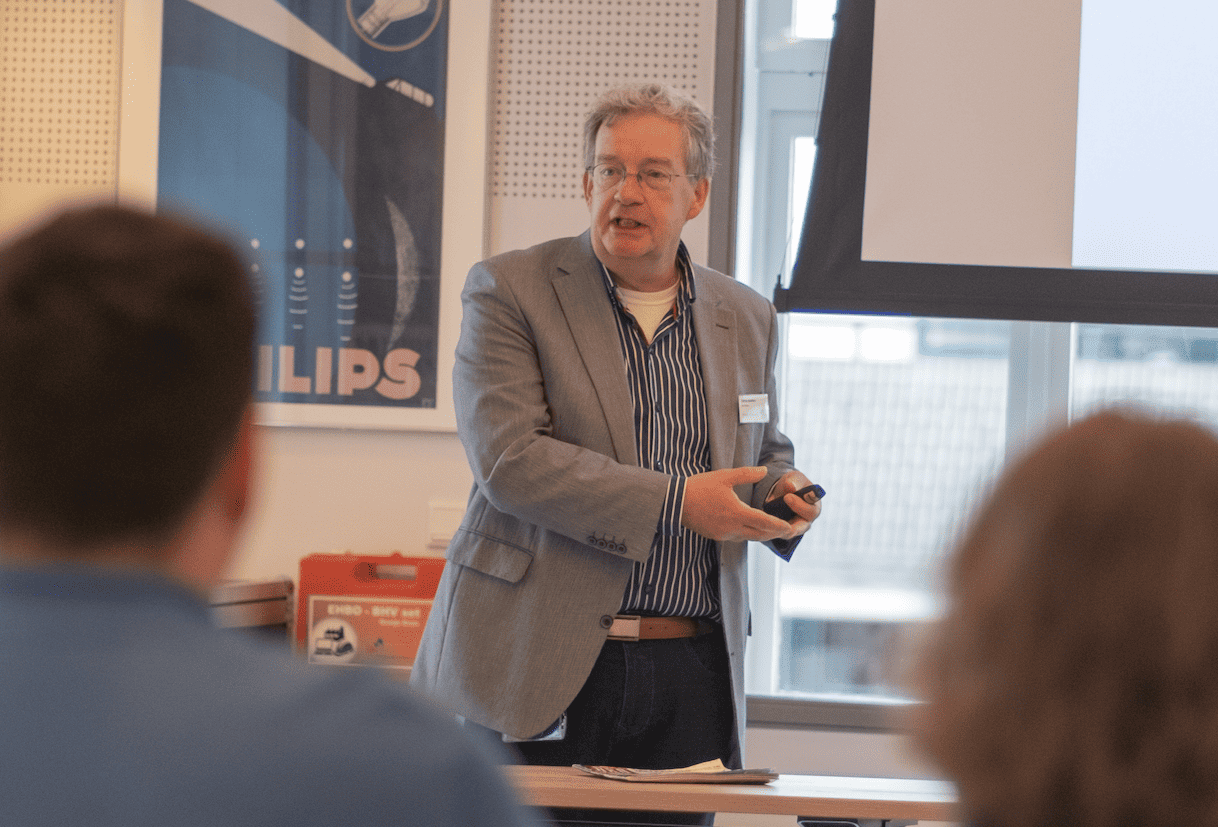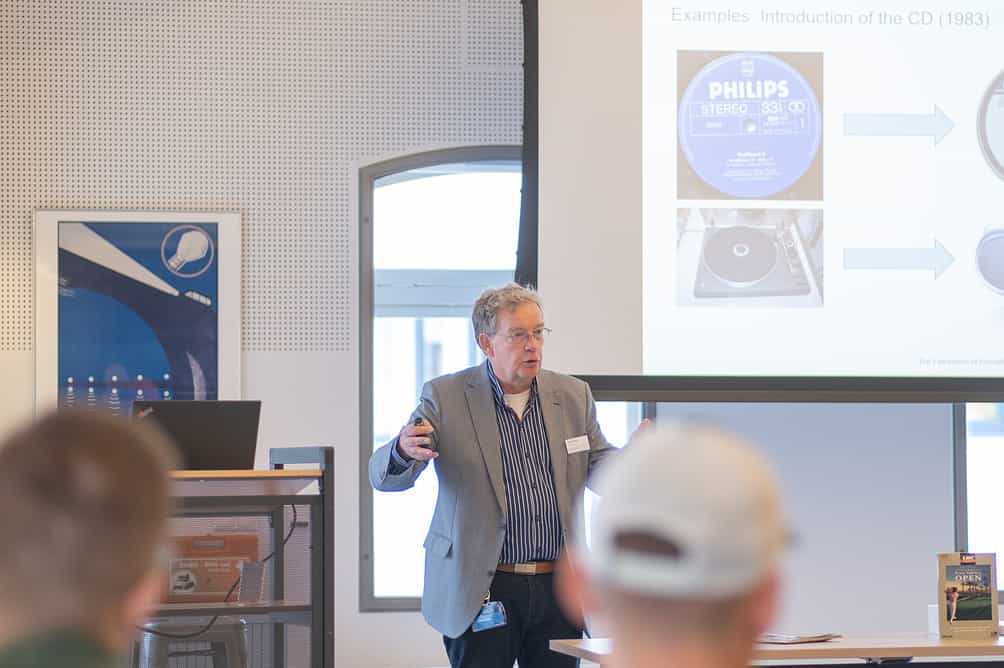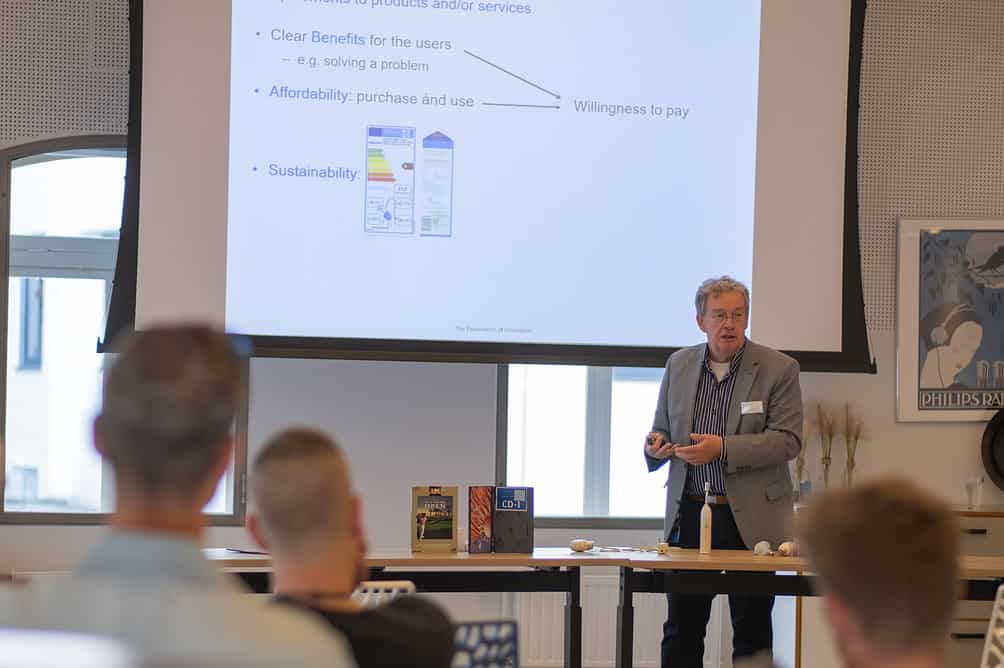
At a time when high-tech companies and governments must hold their ground amid constant disruptions and the need to pursue innovative goals, Ferrie Aalders offers an enlightening – and manageable – perspective. Aalders, whose career spans crucial stages of transformation within Royal Philips, has seen from the inside how large organizations can meet these challenges. We discussed the lessons for industry and government he brought together in the book Cultivating Organizational Excellence – A Practitioner’s View (published by Springer). This is the second part of the interview; read the first part here.
The book convincingly demonstrates how excellence is related to an organization equipped to withstand disruptions. Aalders emphasizes the importance of well-connected stakeholders in an organization’s steps to stay ahead. Aalders’ book provides a “recipe” for organizations to improve and take themselves to the next level. This builds on the EFQM model and provides a detailed approach to managing change, dealing with information management, and establishing a broader business management system.
Why this is important:
As an implementer of organizational change and innovation, Ferrie Aalders has recognized patterns in what happened during his daily work in highly dynamic organizations such as Philips. His experience can help better deal with innovation processes in large organizations.
Innovation culture
It all has to do with innovation culture, he says. “An innovation culture you can steer and develop. How do you ensure that you deal with stakeholders in such a way that they feel involved? That they start thinking with you. That they will participate and eventually act as a kind of ambassador for your innovation. You have to know how to play that game. If you don’t see that that innovation culture directly affects the quality and ultimately the outcome of the process, then it all becomes very laborious.”
Not every government lacks a culture of innovation, Aalders noticed from one of the reactions his book received after its publication. “It came from the Kingdom of Bhutan in the Himalayas, a very progressive country that not only measures its economic parameters but also how happy the people are. And they steer by that as well. To manage that, they do, among other things, an annual integrity assessment of their governance. They used my chapter 6, which talks about rewarding and recognizing employees in the context of anti-corruption and remuneration structure. I am proud of that, yes.” For Aalders, it is also a signal that governments could work more with bonuses. “A civil servant has a salary on which they can live just fine and where years of service translate into salary scales, but with that, you don’t cultivate a willingness to change. You cannot stimulate transformations because no bonus structure is attached. The work is focused on execution and not innovation.”
Lightyear
Such a bonus structure does need to be scalable to work well. “When you think about it, that may sound very logical. But for many start-ups, it’s still far from obvious, but that’s where it matters. If you want to grow and scale up, your performance indicators must support that. Because if not, you have to rethink that every year. If those parameters are scalable, you have continuity in what you do from year to year. If you had scalable performance indicators, you could have seen that whole Lightyear debacle coming. Of course, they also looked at indicators like the number of orders, cash flow, number of employees on the payroll, and so on. If you look at all of those in isolation, maybe alarm bells don’t go off so quickly. But the moment you relate them to each other, you see, hey, wait a minute, we are growing much faster in terms of personnel than our order intake. Or than our production capacity. You have to relate those things to make it comparable both over time and with other industries.”


It’s not just about scaling up but also scaling down, as Aalders also knows from his Philips experience. “If parts of your business are discontinued, you also have to see that you do that in an effective way. It’s about the whole spectrum of changes you have to operate in as an organization. Even for a government. The moment you conclude that your population is aging, you have to start thinking about how many people will soon need care versus how many people there are to pay for or deliver that. And the same thing with pension funds. How many people are contributing, and how many are benefiting? And if you don’t link that somehow, you have all kinds of numbers, but it doesn’t say anything.”
Politics
The complicating factor for governments is, of course, political reality. Aalders is sad to see how even the most obvious indicators have to give way to political wishes. “The question is ultimately whether you want to govern the country based on the available information. All kinds of political interests do not consider the logic of the linked numbers. If you don’t properly consider those indicators in relation to each other, then you can make up all kinds of plans, but you’re not taking advantage of the richness of the information out there. Completely unnecessary.”

How can it be done rightly? Aalders: “You set a horizon, you make an agenda in which the most important changes can be found in one way or another, and make sure that you continue to measure and steer this. You do this in such a way that you anticipate the changes that will occur. Communicate about this so stakeholders in one way or another can think along and grow along with it.”
Recognizing patterns
What does Aalders want to achieve with his book? “I hope it will be useful to people in a wide range of organizations, not just in tech-savvy companies, but in a much broader arena, including the public sector. As an implementer of organizational change and innovation, I’ve recognized patterns in what happened during my daily work in very dynamic organizations. I want to share that experience precisely because it can benefit many organizations.”


